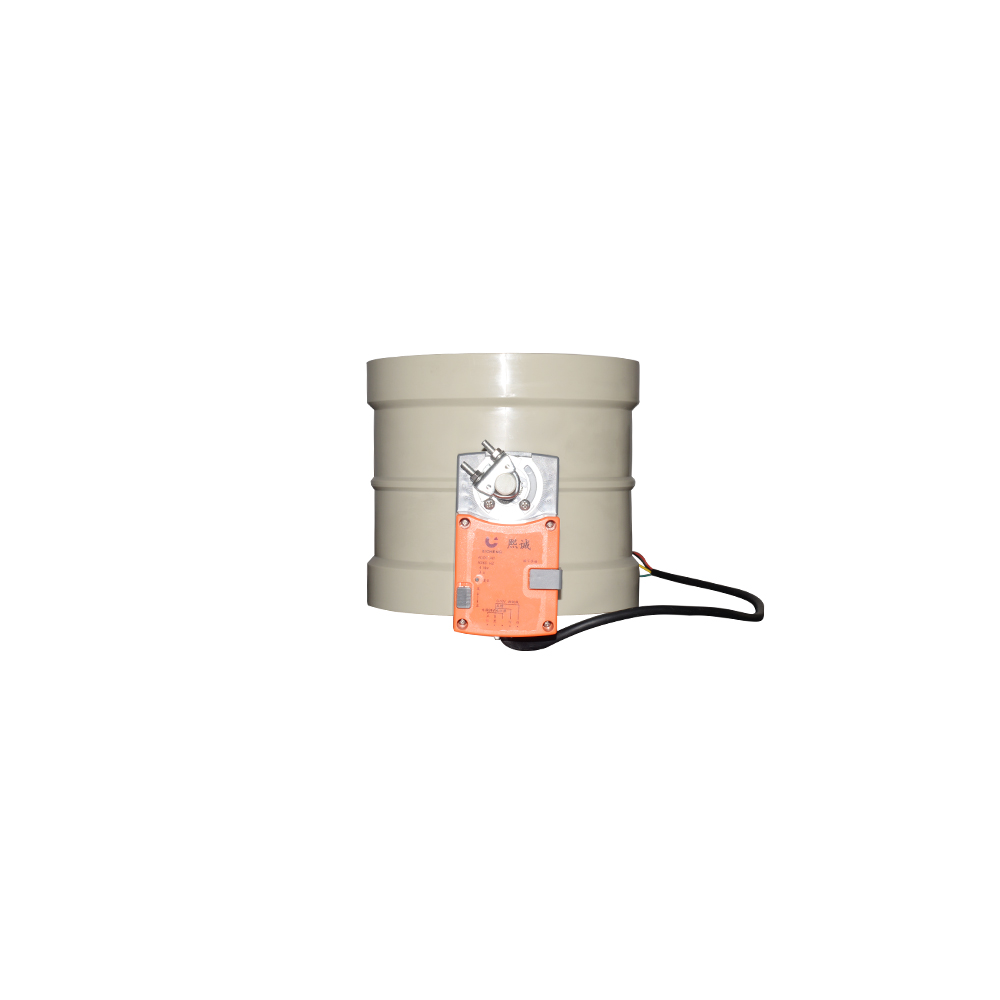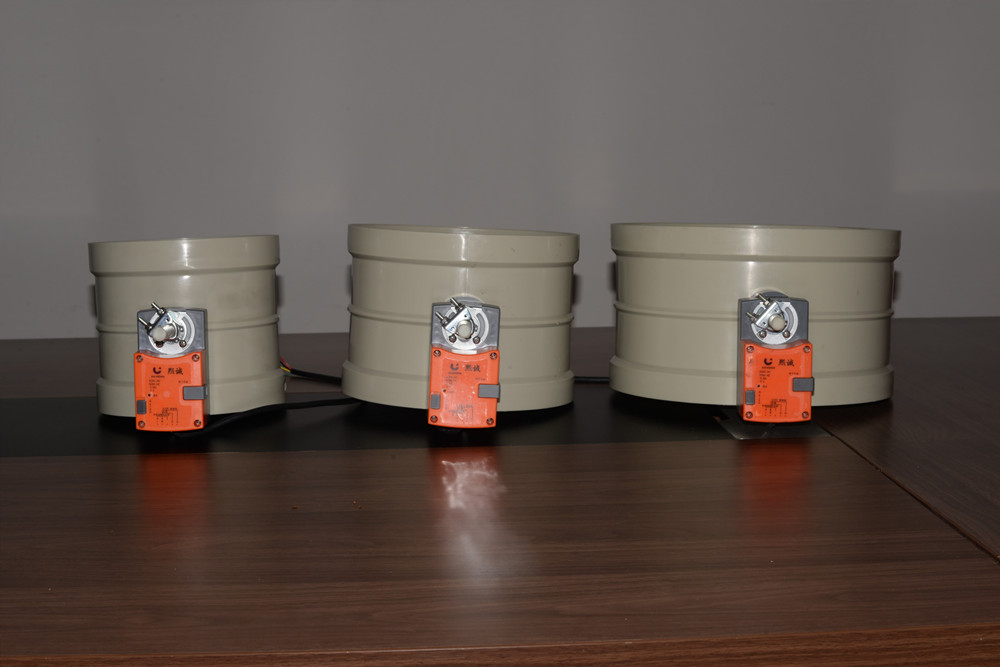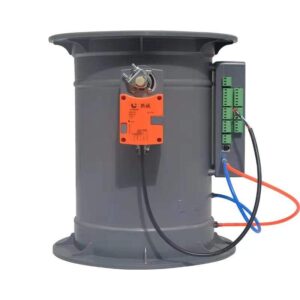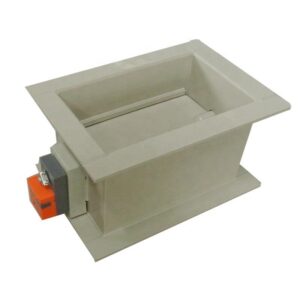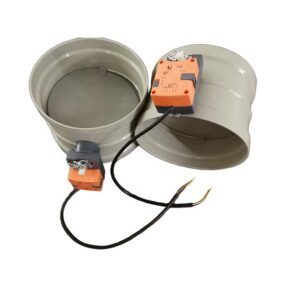Description
An electric air damper valve is a component used in HVAC (heating, ventilation, and air conditioning) systems to regulate the flow of air. The “110MM” in the description likely refers to the size of the damper valve, which is 110 millimeters in diameter.
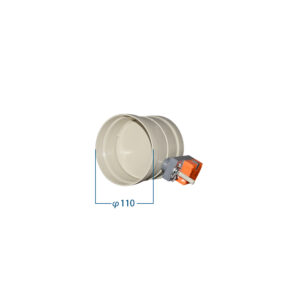
The electric air damper valve is designed to be installed in the ductwork of an HVAC system, and is typically controlled by a thermostat or building automation system. When the thermostat or automation system calls for more heating or cooling, the damper opens to allow more air to flow through the ducts. Conversely, when less heating or cooling is needed, the damper closes to reduce airflow.
The electric motor in the damper valve is typically powered by low voltage DC current, and is controlled by a small circuit board that receives signals from the thermostat or automation system. The damper itself is usually made of metal or plastic, and may include fins or louvers that can be adjusted to further control the airflow.
Overall, the electric air damper valve is an important component in HVAC systems that helps to ensure efficient and effective heating and cooling.
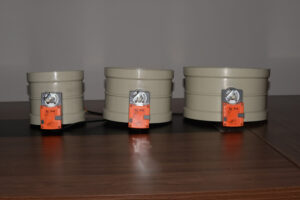
Electric air damper valves have several advantages over traditional manual or pneumatic damper valves.
Advantages of Electric Air Damper Valve:
- Energy Efficiency: Electric air damper valves are designed to be energy-efficient. They can be controlled more precisely and with greater accuracy than manual or pneumatic damper valves. As a result, they can help reduce energy waste and lower energy costs.
- Remote Control: Electric air damper valves can be controlled remotely, allowing for more convenient and flexible operation. They can be integrated into building automation systems, allowing them to be controlled from a central location, making them ideal for large buildings with complex heating, ventilation, and air conditioning (HVAC) systems.
- Reduced Maintenance: Electric air damper valves require less maintenance than manual or pneumatic damper valves. They are designed to be durable and long-lasting, and they do not require regular lubrication or adjustment.
- Improved Safety: Electric air damper valves are generally safer than manual or pneumatic damper valves. They can be programmed to respond to emergency situations automatically, and they can be shut off quickly and safely if necessary.
- Better Performance: Electric air damper valves offer better performance than manual or pneumatic damper valves. They can be programmed to respond to changes in temperature or humidity, and they can be adjusted quickly and accurately to maintain optimal airflow and air quality.
Overall, electric air damper valves provide a more energy-efficient, convenient, and reliable solution for regulating airflow in HVAC systems.


